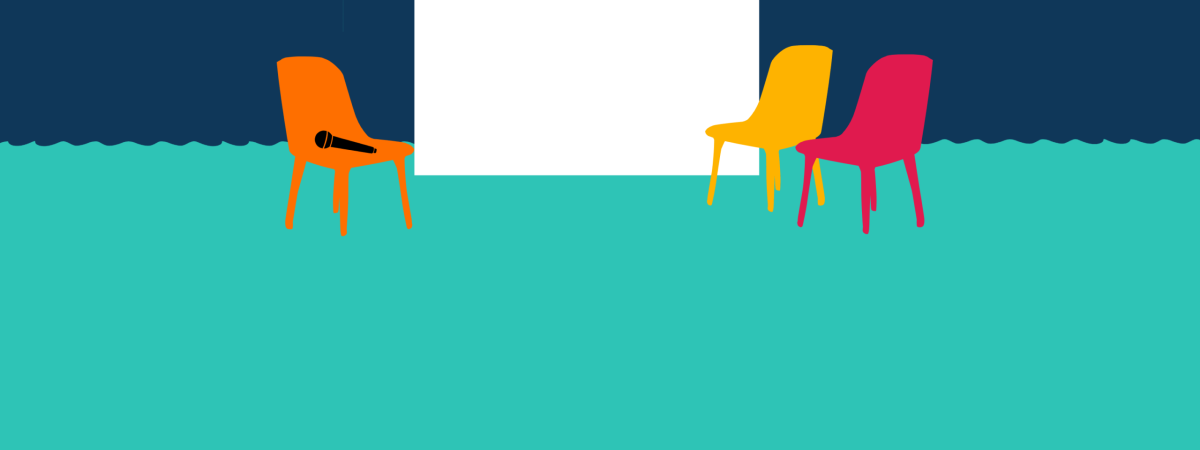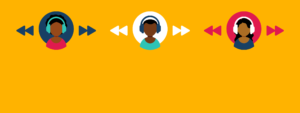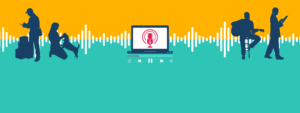Advertising Week New York packed the house this year — especially inside the Podcast Zone, where Sounds Profitable hosted two full days of sessions that were, quite literally, standing-room only. Our observation from the panels, and from that leaning-in audience of buyers, planners, marketers and creators in the house, is that podcasting isn’t waiting for validation anymore — it’s earning investment and proving performance one trusted voice at a time.
Here are highlights from some can’t-miss sessions in case you did miss them.
…From Experimental to Essential
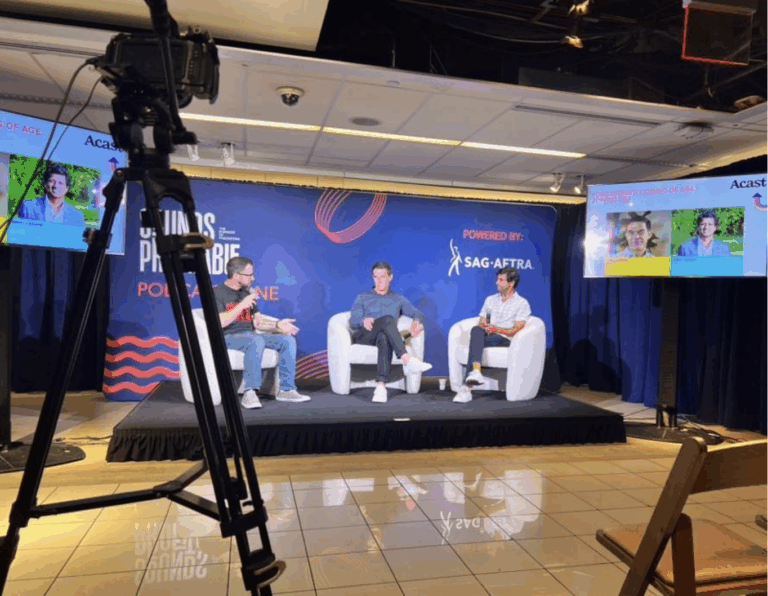
In a panel titled, “Podcasting’s Coming of Age, Joining Us?” Meadowlark Media’s Bimal Kapadia summed up podcasting’s appeal from the ad buyer’s perspective: “The value is the predictability, the brand safety, and the ability to get your ads in something where you know people are showing up… Podcasting isn’t waiting for validation anymore — it’s proving its worth week after week. The next opportunity isn’t just to buy podcasts, but to build with them.”
Acast CEO Greg Glenday reinforced the message with both proof that originated with direct response (DR) advertisers, and a challenge to buyers: “The biggest podcast advertisers built their success on DR and attribution — tracking weekly whether people signed up, ordered, or acted. The answer is ‘yes’, and that’s how we’ve been growing. So why don’t P&G or Unilever or BMW or Coca-Cola think about it that way? They do, but they’re watching and being cautious. So we say, jump in — the water is warm.”
Moderator Bryan Barletta marked how far the industry has come based on his own empirical results. His trade group Sounds Profitable now has more than 200 partners, “evidence that podcast advertising works and has moved from experimental to a consistent part of media plans.”
Ask, Listen, and Act
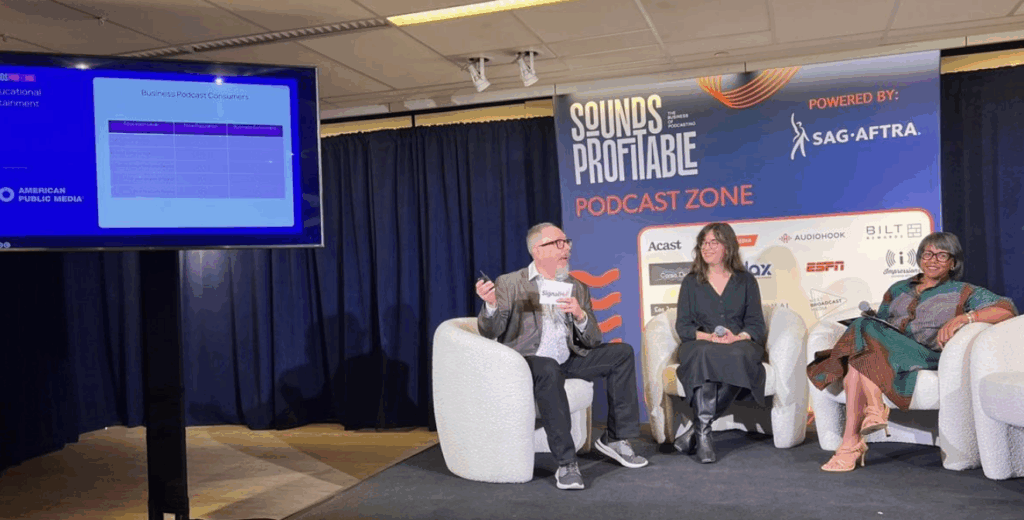
Signal Hill Insights President Paul Riismandel co-presented the panel “The 10% That Drives 50% – Reaching Consumers Who Power the Economy in Uncertainty,” joined by Sara Low and Jasmine Victor of American Public Media Group. That title comes from the fact that the top 10% of households, by income, drives half the consumer spending in the US.
They shared the audience profile of business podcast listeners, sourced from the Sounds Profitable and APM report, “The Business Podcast Consumer.” Compared to the general population they’re more affluent, educated, and younger – a larger percentage are aged 18-34 or 35-54.
Signal Hill Insights conducted a quantitative listener survey for the APM Marketplace portfolio of shows, revealing an engaged audience. 1-in-3 say they listen to ads on Marketplace most of time. But they don’t just listen — they act. Just over half say they’ve taken some kind of action after hearing a podcast ad.
Low’s team at APM followed up with survey respondents for qualitative interviews. In those one-on-ones listeners said they’re interested in learning about more than just B2B brands. They want to hear about lifestyle, self-improvement, health and fitness products.
Reviewing these insights, Riismandel provided – arguably evergreen – advice to publishers and marketers: “If you want to know what the audience thinks, ask them.”
The Data (and AI) Opportunity
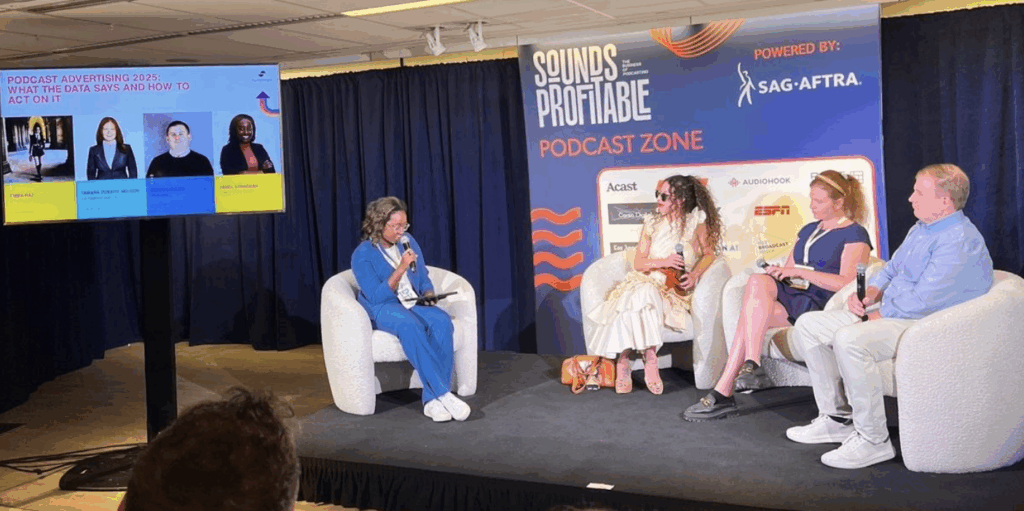
At “What the Data Says and How to Act On It,” Brian Conlan of DAX U.S. spoke to the progress measurement has made, but noted, “You’ve seen partners like Signal Hill Insights showing lift, but the industry has to solve for a proper seat in the MMM (marketing mix modeling) models of the holdcos. Attribution partners have helped put us on the map.”
Data leaders from Barometer and NumberEight explained how AI is now powering smarter contextual and behavioral targeting. Tamara Zubatiy Nelson, CEO of Barometer said, “Now brands can buy the way they buy digital — and bring true relevance to podcast advertising; it’s maybe even more advanced than for CTV.”
Emma Raz of NumberEight added, “AI can help find podcast lookalikes — if you want to buy one desirable show, we can now identify hundreds more just like it with similar audiences.”
Looking to the future, Conlan expects, “host reads at scale.” Nelson’s vote: “Programmatic and bid streams.” Raz recommends, “Looking at pre- and post-campaign data — it will tell you a story.” Moderator, and media buyer, Janel Strachan added her wish list item: “More news (podcasts) in the buys!”
Host Reads: Still the Human Advantage
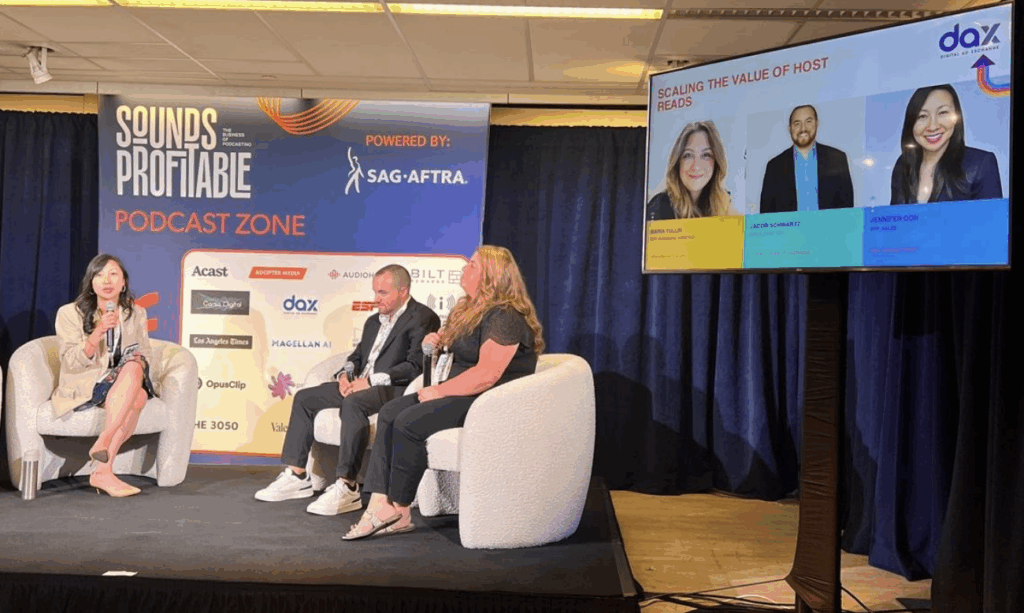
Continuing the thread of “Scaling the Value of Host Reads,” the human factor was front and center in this panel led by Jennifer Louie Oon from DAX U.S. Maria Tullin of Horizon Media shared, “For every plan we aim for actionable learnings — what succeeded in terms of genres for the brand, say, sports or culture. Mid-tier shows are valuable, and we always reserve a portion of the buy to test and learn.”
IPG Mediabrands’ Jacob Schwartz emphasized the creative advantage of trusting hosts: “Context is key. Find relevant conversations in unexpected genres. And don’t try to dictate how things are done — copy points are best. Then let creators do what they do best. Creative is everything. The media buy is just putting the ball on the tee.”
Practicality and Progress in Podcasting
Practical strategy was the topic of “Daily Drops, Deep Dives and YouTube,” moderated by Glenn Rubenstein from Adopter Media.
Miranda Dias, the Growth Marketing Manager at 3Z Brands shared her approach to deep dive campaign testing. “Our understanding is that one spot randomly is not going to resonate with the audience.” Instead they aim to review two or three spots over several months since, for example, “it might not be the buying season for that product… We see shows that we tested that had zero revenue suddenly pop off.”
You need to be close to the data to understand any lag in revenue, adding, “if it’s still underperforming we’ll look at the copy for tweak.” Then, she points out, “we now have a better understanding of how their audience reacts.”
Audioboom’s Jenni Skaug weighed in on using programmatic buying combined with host read ads. “I feel like you need to be a known brand, like a Nike or an AT&T,” to get results with that strategy. “You need to already have that relationship that the host has given you with their audience for programmatic to be effective.”
Looking ahead to 2026, Skaug said she’s bullish on video. Dias also foresees growth in 360-degree multi-channel campaigns, though acknowledged the challenges of attribution for those campaigns containing more embedded, customized segments across platforms like Instagram. “It’s a bit of a gamble, but when it pays off, it pays off very big. That’s a bit of a challenge, but it’s an exciting challenge.”
Bridging Podcasts and Creators
Outside the Podcast Zone walls, we heard on-stage comments about creators and word-of-mouth marketing that apply equally well to podcasting.
“Social and walled-garden B2B communities are becoming the source of word-of-mouth vendor recommendations. (They’re) the new Google,” said Kathleen Booth of Pavilion. She added, “There’s a reorientation from short term to long term tactics.”
Brendan Gahan, who helms Creator Authority, an influencer marketing agency, pointed out, “Creators are helping build trust — more than anything else. Cater your message to different buying groups and amplify creator content with paid ads. Consider even licensing content from creators and co-create lead magnets to tap into their credibility at scale.”
The Bottom Line
No matter your objectives or buying strategy, discussions at Advertising Week underscored the key to audio is that people listen, and need to trust, what they hear. The water’s warm indeed.
